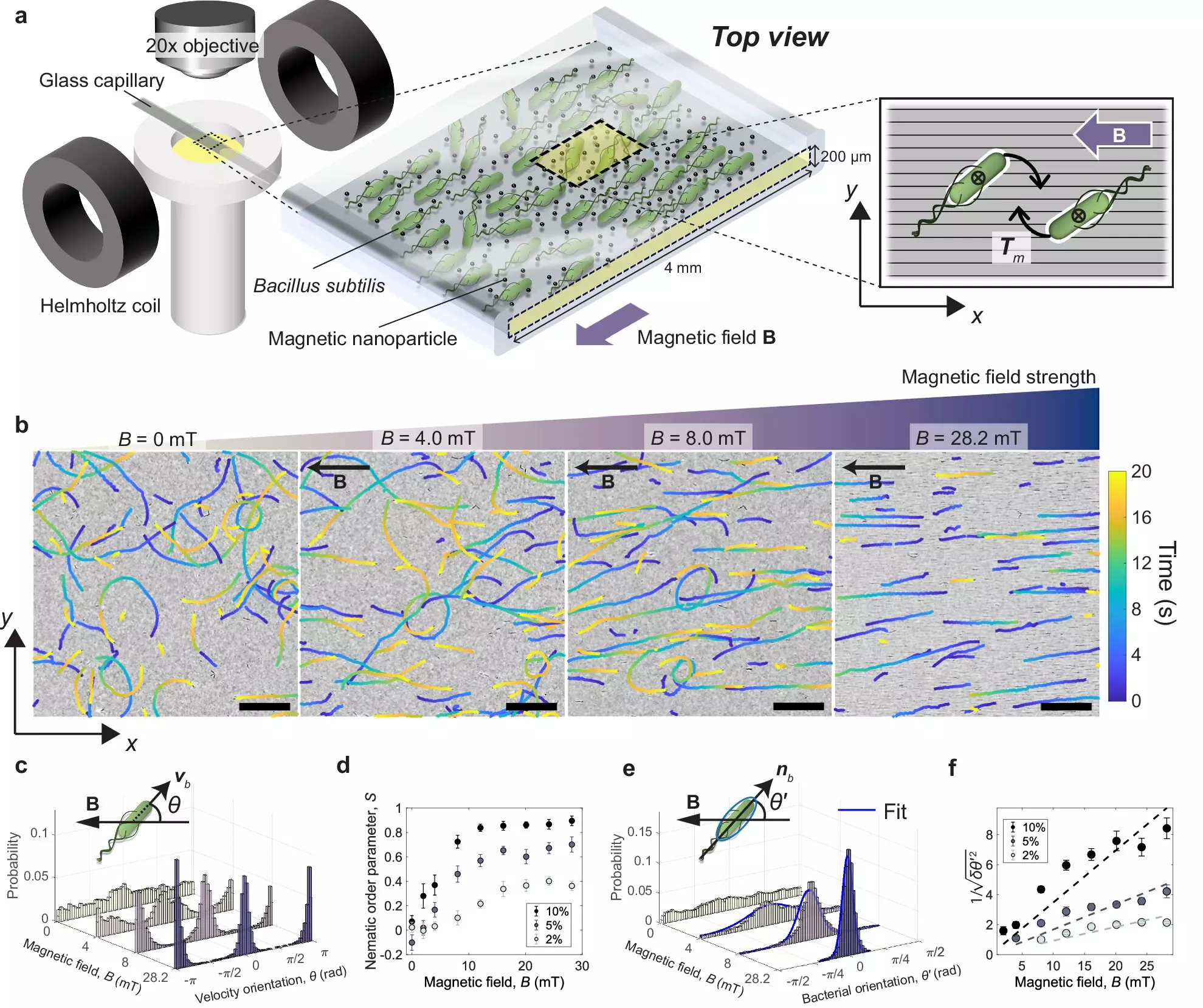In a groundbreaking study conducted by researchers at Aalto University in Finland, a new method has been discovered to manipulate the movements of bacteria using magnets. The implications of this discovery go far beyond simply organizing the bacteria; it opens up a realm of possibilities for various scientific research areas such as complex materials, phase transitions, and condensed matter physics.
Unlike magnetotactic bacteria which are inherently magnetic, the bacteria used in this study, Bacillus subtilis, are not magnetic. The researchers achieved control over these bacteria by mixing them with millions of magnetic nanoparticles in a fluid. When magnets are activated, creating a magnetic field, the bacteria align themselves with the field as it is the most energetically favorable arrangement. Essentially, the bacteria act as non-magnetic voids in the magnetic fluid, allowing them to be guided by the magnetic field.
The strength of the magnetic field directly affects the alignment of the bacteria. With the magnets off, the bacteria move randomly. As the magnetic field strength increases, the bacteria gradually align themselves into orderly rows. Higher population density requires a stronger magnetic field to overcome the effects of “active turbulence” created by the swimming bacteria. This phenomenon is crucial for studying active matter physics and understanding how dynamic patterns emerge from individual unit behaviors.
The manipulation of bacterial movement and turbulent flow has vast implications for the development of self-sustaining materials, microrobotics, and biological engines. The ability to control the behavior of active matter on a microscopic scale opens up possibilities for targeted drug delivery and energy harvesting. By fine-tuning alignments using magnetic fields, researchers can delve deeper into the study of phase transitions and condensed matter physics. Future studies will explore the effects of dynamic magnetic fields, such as rotating magnetic fields, to further advance this field of research.
The ability to control bacterial movement through magnetic manipulation not only signifies a remarkable scientific achievement but also paves the way for innovative applications in various fields. This study highlights the importance of active matter physics and the potential for harnessing the behaviors of individual units to create complex and functional materials. As researchers continue to explore the possibilities of magnetic control over bacterial movement, the future of active matter research looks promising and full of potential breakthroughs.


Leave a Reply